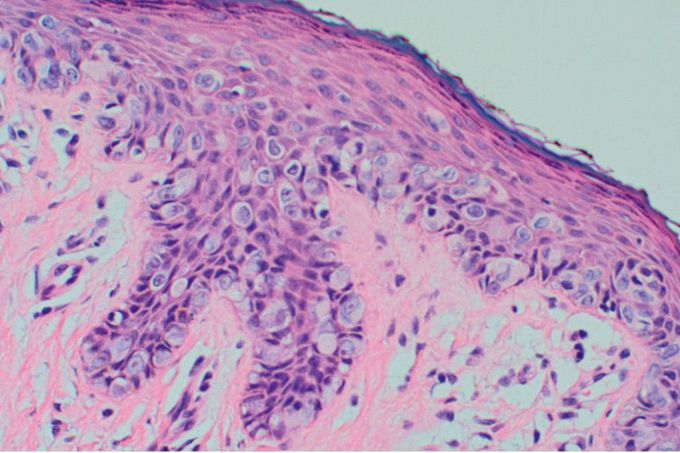

Breast cancer
A 48-year-old woman has noticed a red, scaly area of skin on her left breast that has grown slightly larger over the past 4 months. On physical examination, there is a 1-cm area of eczematous skin adjacent to the areola. The figure shows the microscopic appearance of the skin biopsy specimen. What is the most likely diagnosis? A. Apocrine metaplasia B. Fat necrosis C. Inflammatory carcinoma D. Lobular carcinoma in situ E. Paget disease of the breast Paget cells are large cells that have clear, mucinous cytoplasm and infiltrate the skin overlying the breast. They are malignant and extend to the skin from an underlying breast carcinoma, which may be occult, so that Paget disease may be the first sign of malignancy. Apocrine metaplasia affects the cells lining the cystically dilated ducts in fibrocystic change. The macrophages in fat necrosis do not infiltrate the skin and do not have the atypical nuclei seen in the figure. Inflammatory carcinoma does not refer to a specific histologic type of breast cancer; rather, it describes the involvement of dermal lymphatics by infiltrating carcinoma, and there may be thickening and a reddish-orange appearance to the skin. In lobular carcinoma in situ, terminal ducts or acini within the breast are filled with neoplastic cells. Paget disease: Nipple ulceration and erythema.

